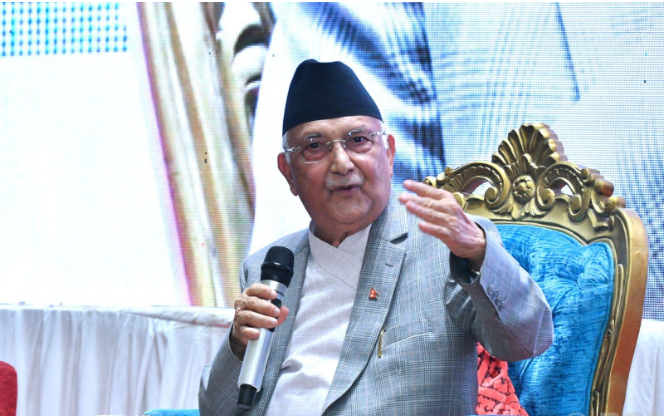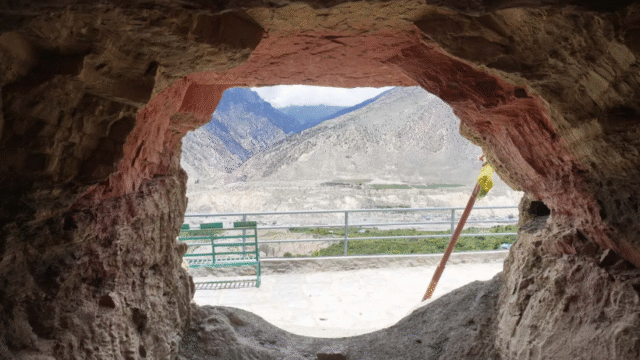On the occasion of World Tiger Day, Prime Minister KP Sharma Oli stressed the importance of increasing Nepal’s tiger population in line with the country’s capacity. Speaking at an event organized by the Department of National Parks and Wildlife Conservation in Kathmandu, where he engaged in a ‘Tiger Dialogue with Children,’ PM Oli highlighted the government’s policy of wildlife conservation based on the nation’s resources and limitations.
PM Oli reiterated the ban on poaching and illegal trade of wildlife, underscoring that the country’s tiger conservation efforts must be aligned with its capacity to avoid human-wildlife conflict. “We cannot increase the number of tigers beyond our capacity. Recklessly increasing the tiger population could lead to human destruction,” he warned. “There are many animals and wildlife in nature; they need a comfortable habitat, and conflicts must be avoided. We need to ensure the safety of humans first.”
During the event, PM Oli responded to questions from children from various schools, including Little Angels. He emphasized that humans are only a part of nature and advocated for the expansion and better management of current wildlife sanctuaries. He pointed out the need for education on wildlife conservation through zoos, stating that the existing Central Zoo in Lalitpur is too small and should be expanded.
PM Oli also mentioned the ongoing construction of the wildlife park in Surya Binayak, Bhaktapur, which was initiated during his previous term as Prime Minister in 2016. He emphasized the importance of categorizing and preserving wildlife in different zoos to manage the growing numbers effectively.
Forests and Environment Minister Aina Bahadur Shahi Thakuri highlighted the presence of rare wildlife species in Nepal and called for collaboration between the federal, provincial, and local governments, as well as non-governmental organizations, to enhance conservation efforts. He stressed the importance of maintaining large grasslands, forests, and water bodies as suitable habitats for tigers and other wildlife, advocating for a balance between development and environmental conservation.
Lalitpur Metropolitan City Mayor Chiri Babu Maharjan requested the Prime Minister to address the limited space of the Central Zoo for tiger conservation. He recalled the city’s financial support during the COVID-19 pandemic to provide food for wildlife and emphasized the significant relationship between the metropolis and the zoo in wildlife conservation.
Director General Dr. Sindhu Prasad Dhungana of the Department of National Parks and Wildlife Conservation noted that Nepal’s Constitution includes policies for environmental conservation, which have been translated into relevant laws and regulations. He acknowledged the contribution of the Terai Arc Landscape in enhancing biodiversity and mentioned the United Nations’ recognition of Nepal in 2023 for its conservation efforts, which have positively impacted eco-tourism and the national economy.
Acting Secretary of the Ministry of Forests and Environment Bhupal Baral emphasized the importance of increasing tiger numbers for biodiversity. He discussed the challenges of managing human-wildlife conflict and the need for effective habitat conservation and food management for tigers.
Krishna Prasad Oli, President of the Nature Conservation Fund, highlighted Nepal’s leading role in wildlife and bird conservation relative to its size. The event also featured a short play by children involved with the Central Zoo, focusing on tiger conservation.
This year’s World Tiger Day was celebrated with the theme “Human-Tiger Coexistence and Prosperity.” Efforts to conserve tigers in Nepal began in the 1970s. Nepal is one of the 13 countries with the highest tiger populations globally. In 2010, Nepal committed to doubling its tiger population by 2022 by signing an agreement with 12 other tiger range countries in St. Petersburg, Russia. At that time, Nepal had 121 tigers. By 2014, the number had increased to 198, reaching 235 in 2018 and 355 in 2022 across five national parks: Chitwan, Banke, Bardia, Shuklaphanta, and Parsa. Nepal plans to conduct the next tiger population census in 2026, following the practice of counting tigers every four years.






